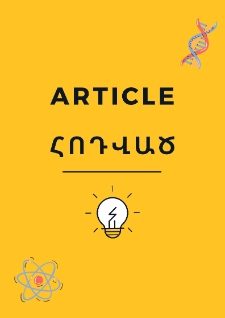Object
Title: Comparison of Different Dichotomous Classification Algorithms
Author:
Zhuravlev Yu. I. ; Ryazanov V. Vl. ; Ryazanov Vl. V. ; Aslanyan L. H. ; Sahakyan H. A.
Type:
Abstract:
Experimental investigations of various dichotomous classification algorithms are carried out. Dichotomous classification, or Error-Correcting Output Codes (ECOCs) classification, is based on the construction of a binary code matrix. The rows of the matrix contain unique codewords of classes, and columns are called dichotomies. A dichotomous classification consists of two stages: coding (construction of a code matrix) and decoding, making a decision on the correspondence of an object to a class by analyzing the code matrix. In this study, an experimental comparison of newly proposed methods for constructing dichotomies and a comparison of different approaches to decoding by the available code matrix are proposed. Preliminary experiments show the prospects of proposed methods.
Publisher:
Date submitted:
Date accepted:
Date modified:
Date of publication:
Identifier:
oai:noad.sci.am:136094
DOI:
Journal or Publication Title:
Pattern Recognition and Image Analysis
Volume:
Number:
URL:
Additional Information:
Affiliation:
Dorodnitsyn Computing Centre, Federal Research Center Computer Science and Control, Russian Academy of Sciences ; Moscow Institute of Physics and Technology (State University) ; Institute for Informatics and Automation Problems, National Academy of Science of Armenia
Year:
References:
Yu. I. Zhuravlev, V. V. Ryazanov, L. H. Aslanyan, and H. A. Sahakyan, “On a classification method for a large number of classes,” Pattern Recogn. Image Anal. 29 (3), 366–376 (2019). ; T. G. Dietterich and G. Bakiri, “Solving multiclass learning problems via error-correcting output codes,” J. Artif. Intell. Res. 2 (1), 263–282 (1995). ; A. P. Bradley, “The use of the area under ROC curve in the evaluation of machine learning algorithms,” Pattern Recogn. 30 (7), 1145-1159 (1997). ; D. M. W. Powers, “Evaluation: From precision, recall, and F-measure to ROC, informedness, markedness, and correlation,” J. Mach. Learn. Technol. 2 (1), 3763 (2011). ; G. H. Ball and D. J. Hall, ISODATA: A Novel Method of Data Analysis and Pattern Classication, Tech. Report NTIS No. AD 699616 (Stanford Research Institute, Menlo Park, 1965). ; A. W. F. Edwards and L. Cavalli-Sforza, “A method for cluster analysis,” Biometrika 56, 362–375 (1965). ; P. McCullagh and J. A. Nelder, Generalized Linear Models, Monographs on Statistics and Applied Probability (Chapman and Hall, CRC Press, London, 1989), Vol. 37. ; M. A. Hearst, “Support Vector Machines,” IEEE Intell. Syst. 13 (4), 18–28 (1998). ; C. L. Blake and C. J. Merz, UCI Repository of Machine Learning Databases (Department of Information and Computer Sciences, University of California, Irvine, 1998). ; F. Pedregosa, G. Varoquaux, A. Gramfort, et al., “Scikit-learn: Machine learning in Python,” J. Mach. Learn. Res. 12, 2825–2830 (2011).
Object collections:
- Digital Library > Academic Insitutions > Insitute for Informatics and Automation Problems of NAS RA > Publications
Last modified:
Apr 23, 2021
In our library since:
Apr 16, 2021
Number of object content hits:
316
All available object's versions:
https://noad.sci.am/publication/149753
Show description in RDF format:
Show description in OAI-PMH format:
| Edition name | Date |
|---|---|
| Comparison of Different Dichotomous Classification Algorithms | Apr 23, 2021 |





